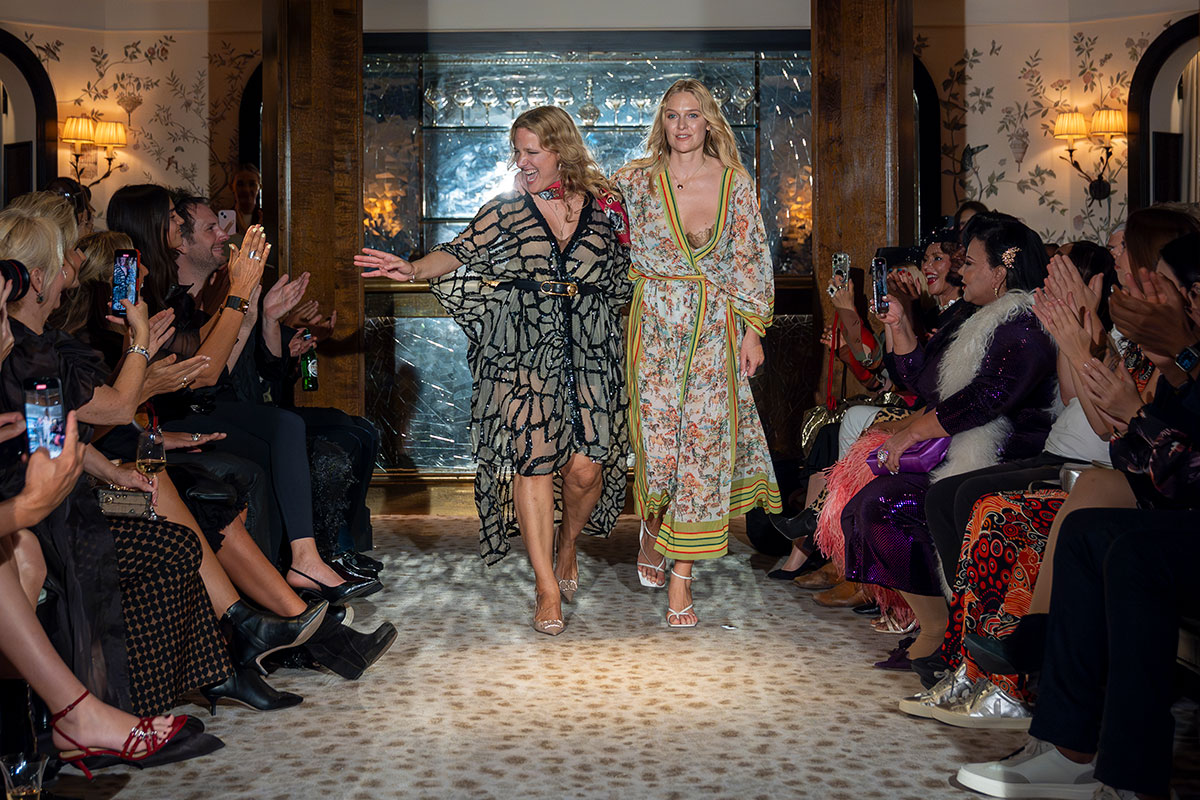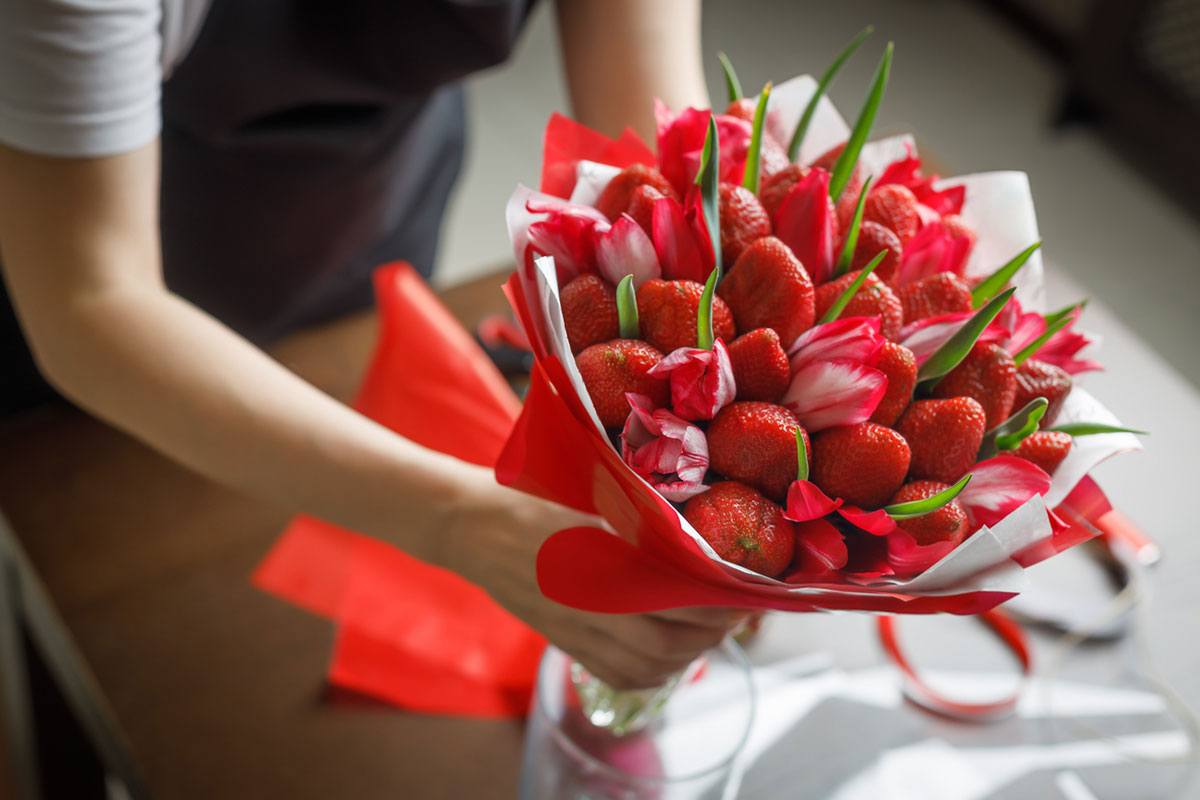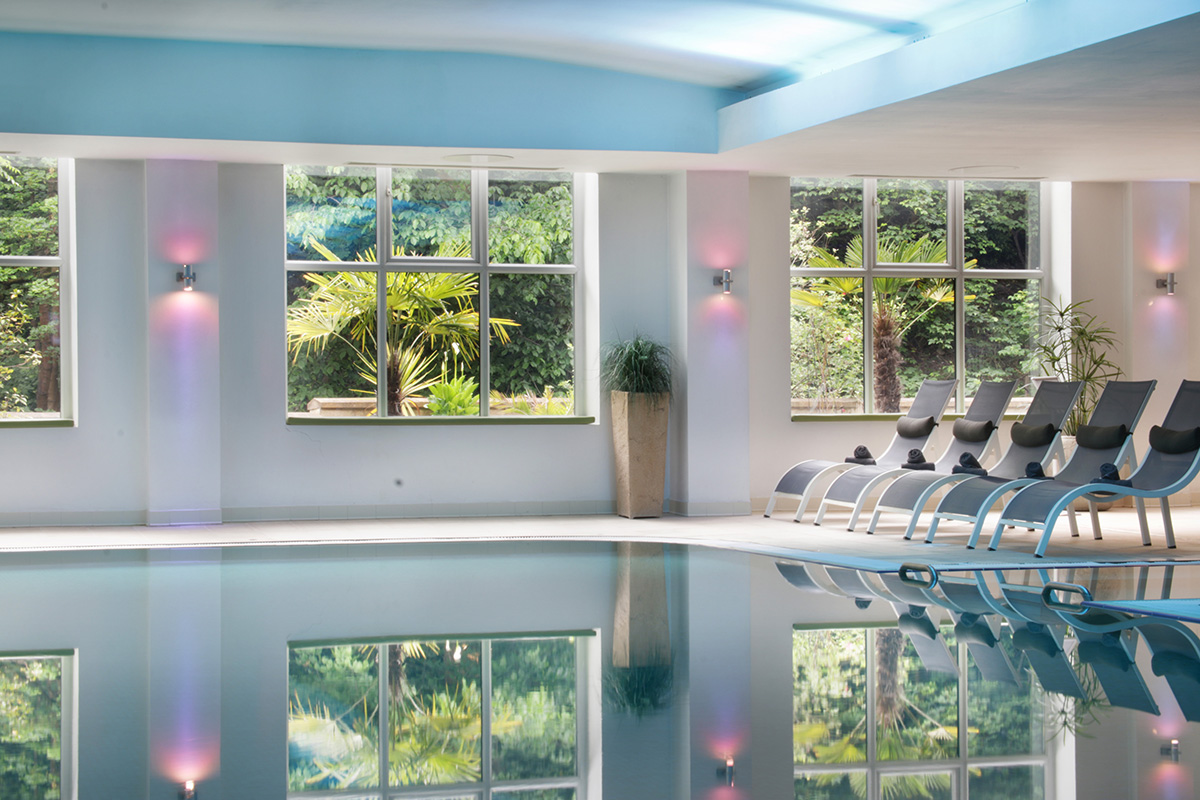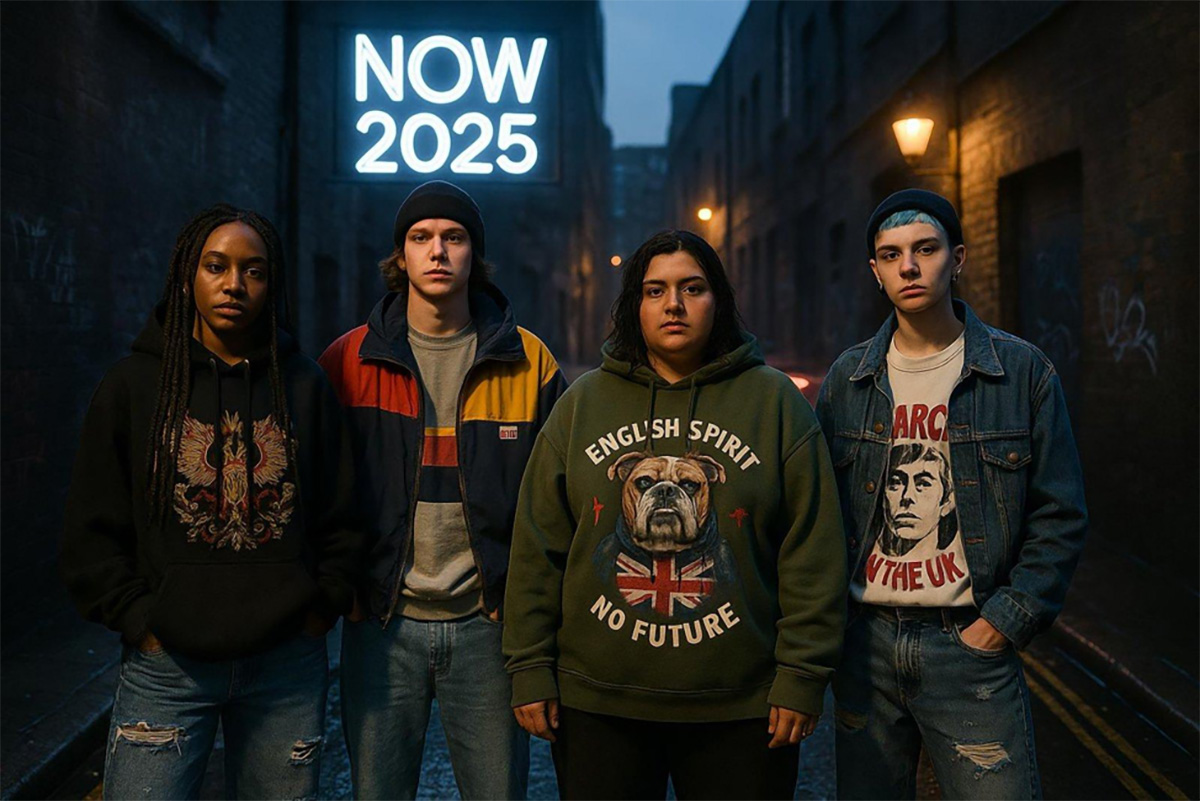“London was the first place that felt like home,” the multidisciplinary artist and fashion designer Ginny Litscher candidly admits to me in the heady aftermath of her debut show at London Fashion Week. “There is space for everybody here,” she explains, speaking both to the inclusivity fostered by London’s diverse fashion scene and to the clothes themselves, as the inspirations behind her Spring/Summer 26 collection ‘TRIBE,’ pull from a myriad of cultures, histories and identities. They “exist together,” to quote Ginny, whose guiding ethos is to “signal personality though energy and clothing,” to be spontaneous, and to always do “what feels right in the moment.”
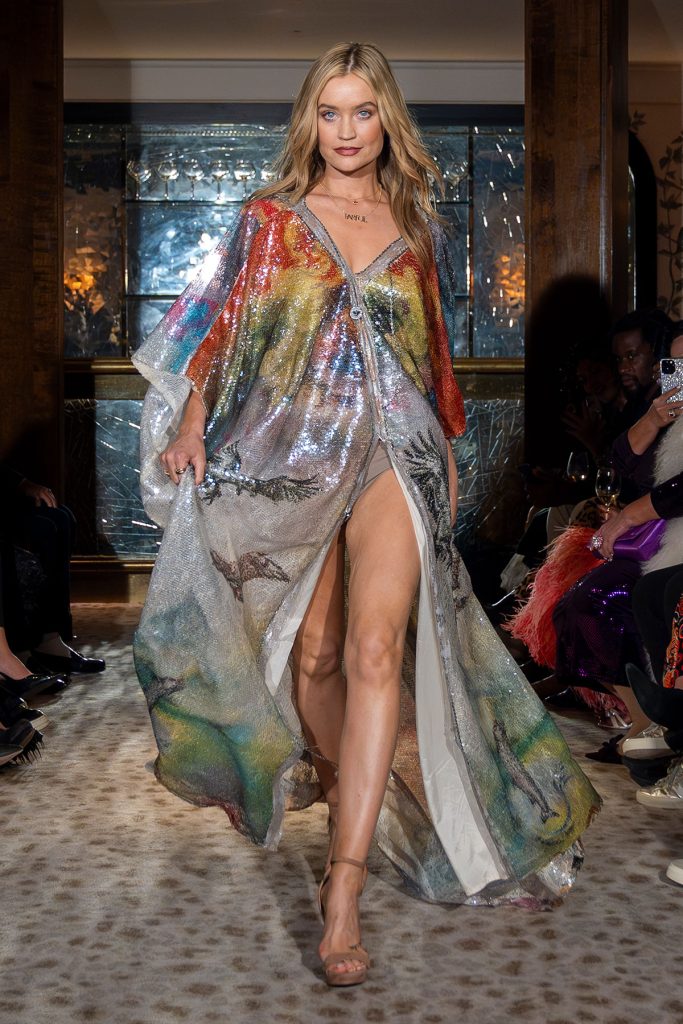
Born in Switzerland, Ginny graduated from the prestigious Central Saint Martins School of Art in 2009, having worked in collaboration with some of the college’s most notable alumni, such as Lee Alexander McQueen. She has also employed her intricate design skills for brands such as Vivienne Westwood, Diane von Furstenberg, and Zara Home. In 2011, Ginny launched her own print collection, specialising in hand-fringed silk scarfs, a unique, couture-level technique that involves the individual printing of silk fringes from original artwork created by Ginny, earning her a nomination for the Swiss Design Prize in that same year. In 2017, Ginny expanded her practice into interior design, creating idiosyncratic wall murals, textile designs and whole room concepts for the Grade I-listed St. Pancras Hotel. Her loyal fans include Lady Gaga, Kiera Knightly, Florence Welch and Rosie Huntington-Whiteley to name only a few, and her London Fashion Week debut was awash with famous faces, from actress Rose McGowan, to Sadie Frost, with TV personality Laura Whitmore and model Jodie Kidd walking the show. With the tenets of her design language being grounded in ‘Freedom, Unity and Personal Expression,’ the evolution of her brand from silk scarves through to large-scale artworks exhibited at Art Basel and the Royal Academy London, to collaborations with brands such as Bulgari, Maserati, and fine-jewellery company Lalique, to now, tantalisingly exploring the realms of ready-to-wear fashion and menswear, appears only a natural trajectory for the prodigious creative.
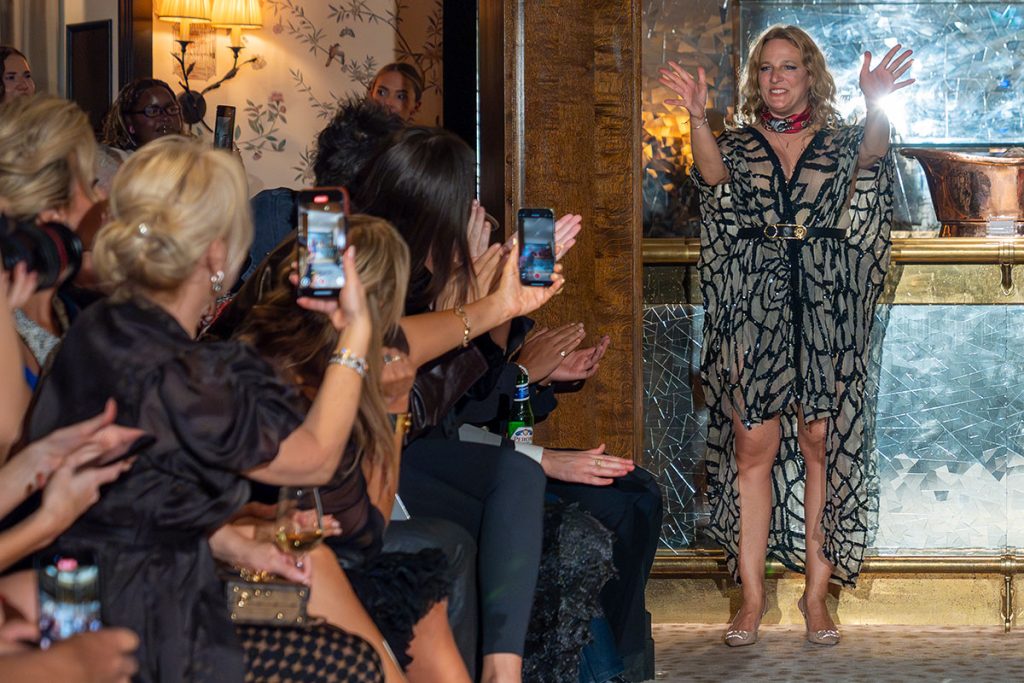
Held at L’Oscar in London, the hotel’s irreverent interior completely complemented the aesthetic world that Ginny has built. Think frosted glass hummingbird-shaped light fixtures by Lalique, mirrored ceilings in the Onyx bar, stained glass windows and Grade II-listed fireplaces. The show itself was presented across the two levels of the hotel’s restaurant, The Baptist – a name which makes sense given that the hotel is housed in the former headquarters of the Baptist Church in Holborn. The Edwardian neo-baroque architecture heightened the sense of reverence in guests, seated in concentric circles below what was once the church’s central dome, the space had been overtaken by lush greenery, hanging baskets brimming with flowers and vines. An Edenic environment that subsequently translated into the core motifs of the collection. Sarongs, kimonos and flowing dresses were adorned with sequins and beading that resembled snake prints, or the scales of a dragon. The backs of the men’s camp-collared silk shirts bore the snarling faces of tigers, or the cuddly images of teddy-bears, each exquisitely embellished. Swimwear, paired with cascading silk bandanas, were painted with the signs of the traditional Indian zodiac, while men donned golden lamé trousers and structured blazers printed with the iridescent orange and silver colourings reminiscent of Japanese koi fish.
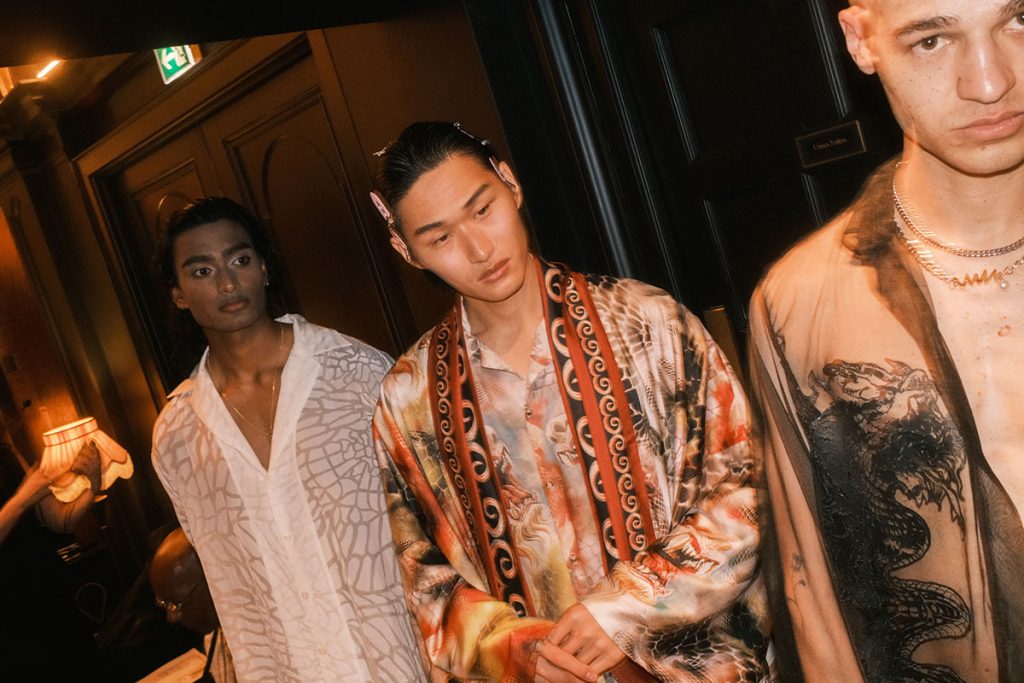
I ask Ginny whether there were references, or ideas she continually returns to. “Tigers,” she answers firstly, finding inspiration in their strength and confidence, but there is a whole menagerie of other animals that she is consistently drawn towards, from hawks, to snails, butterflies, leopards and owls. It is easy to forget that Ginny painstakingly paints each individual animal and environment by hand – she turns around mid-interview gesturing towards a wall-sized canvas hidden beneath the dimmed lights of the foyer – “no one has noticed it!” she laughs. On a closer inspection, the painting resembles Bosch’s Garden of Earthly Delights, crowded with vibrant colourful animals and patterns which served as the blueprint for the designs on the runway. The painting took four-to-five months to complete she explains, but previous works have taken several years to transform into her signature printed silks. “I love that isolation,” she affirms when I ask about her artistic process, “my happiest time is when I am painting,” it’s like meditation for Ginny, “eight hours feel like five minutes.”
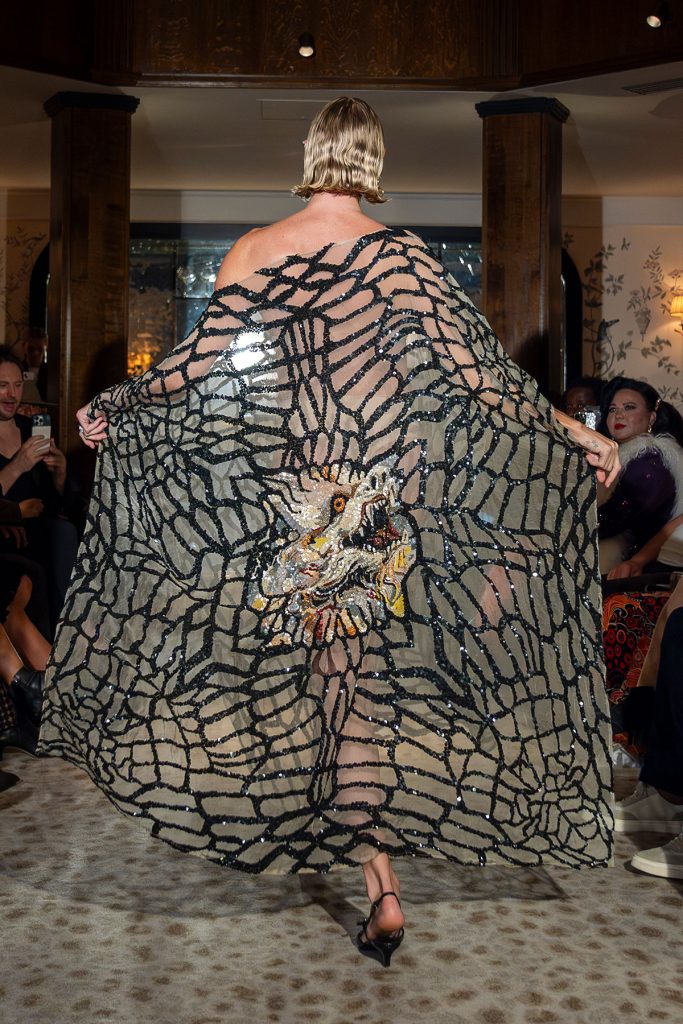
The paintings are then digitally scanned, with certain textures and shadows as she points out, then meticulously bejewelled once the garments are constructed. With such delicate pieces, it is a surprise to hear Ginny’s prioritising of the comfort of the wearer, the clothes appear loud, but the supple fabrics and flowing silhouettes ensure an ease when worn. This duality is reflected in Ginny herself – “I love being an extraverted person,” she considers, “but I can do it for less long than being introverted and painting.” I ask her what’s next for the brand, her interior design prowess promises well for a boutique store in the near-future, but Ginny doesn’t dwell on that idea for long, instead favouring to live more spontaneously in the present. As a celebration of different cultures, identities and histories – with the show being closed out by a 1920s Flapper Girl-esque dance performance, equipped with feather boas and bright pink fans – it is understandable that Ginny wanted the main takeaway of the show to be an emphasis and honouring of self-expression, which should ultimately be the aim of any designer showing during this year’s fashion week.
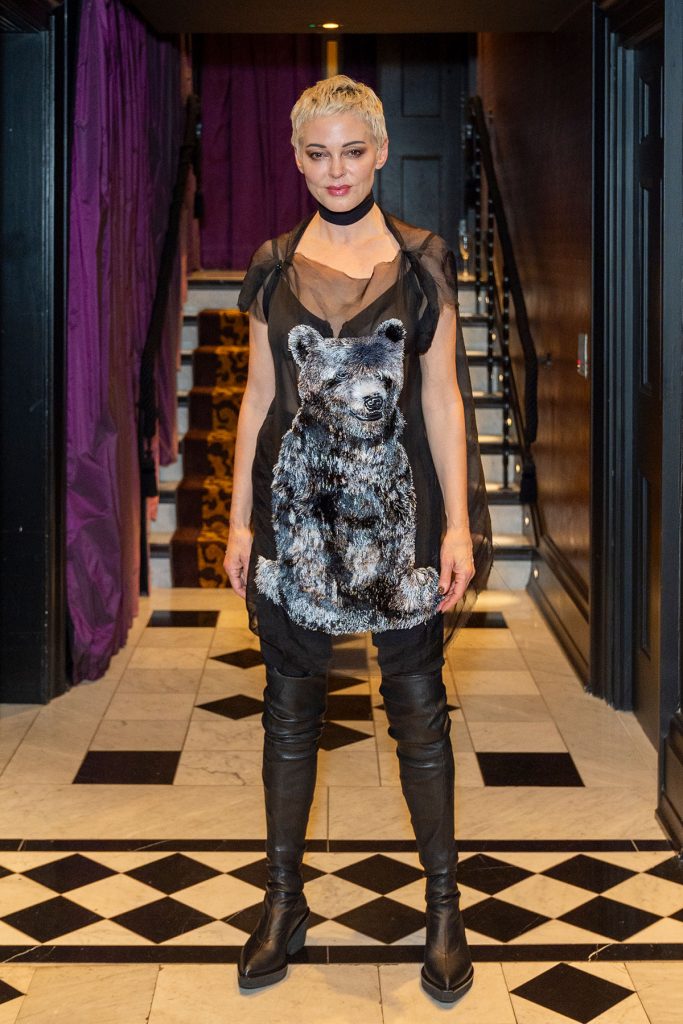
By Joel Danziger

